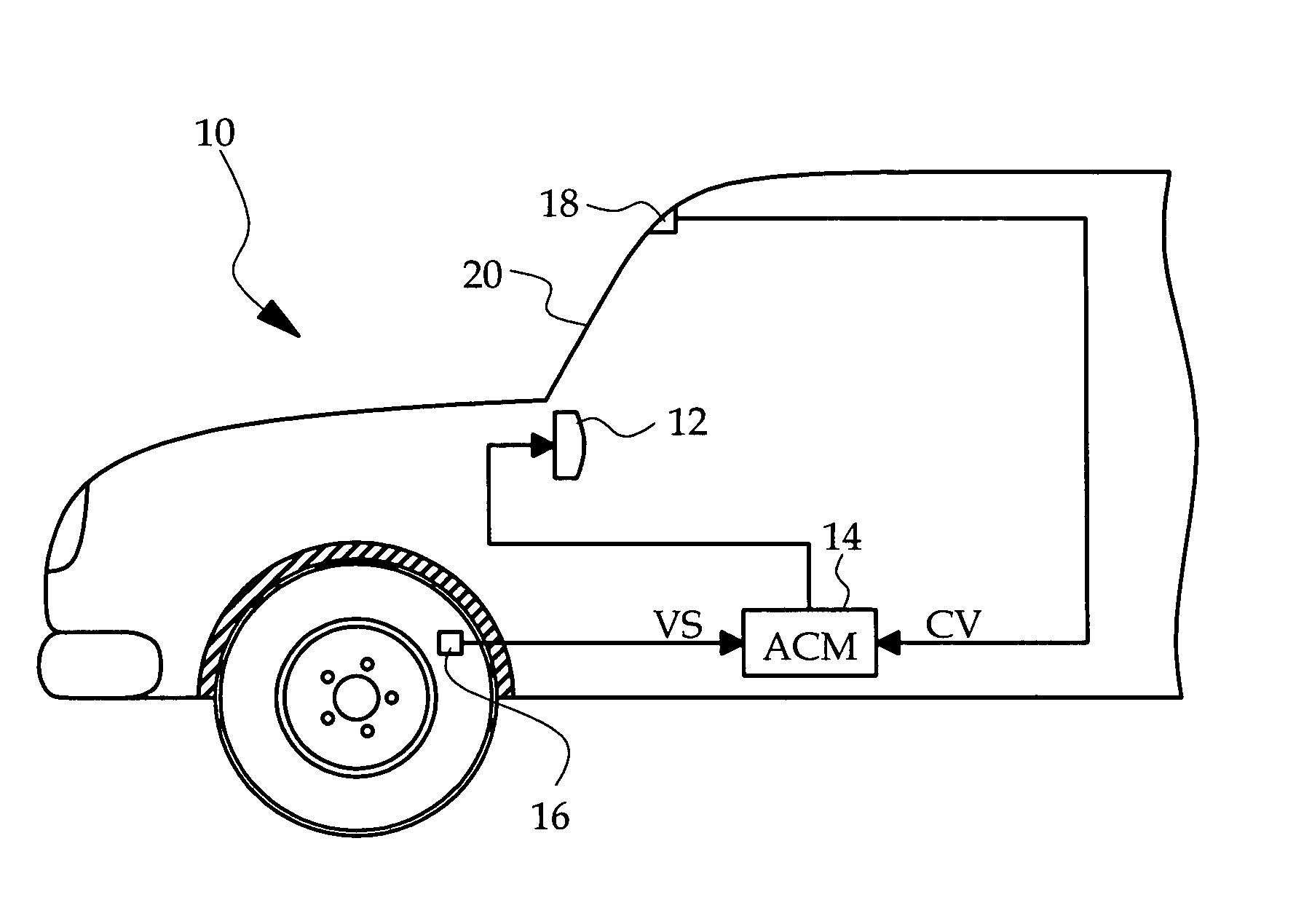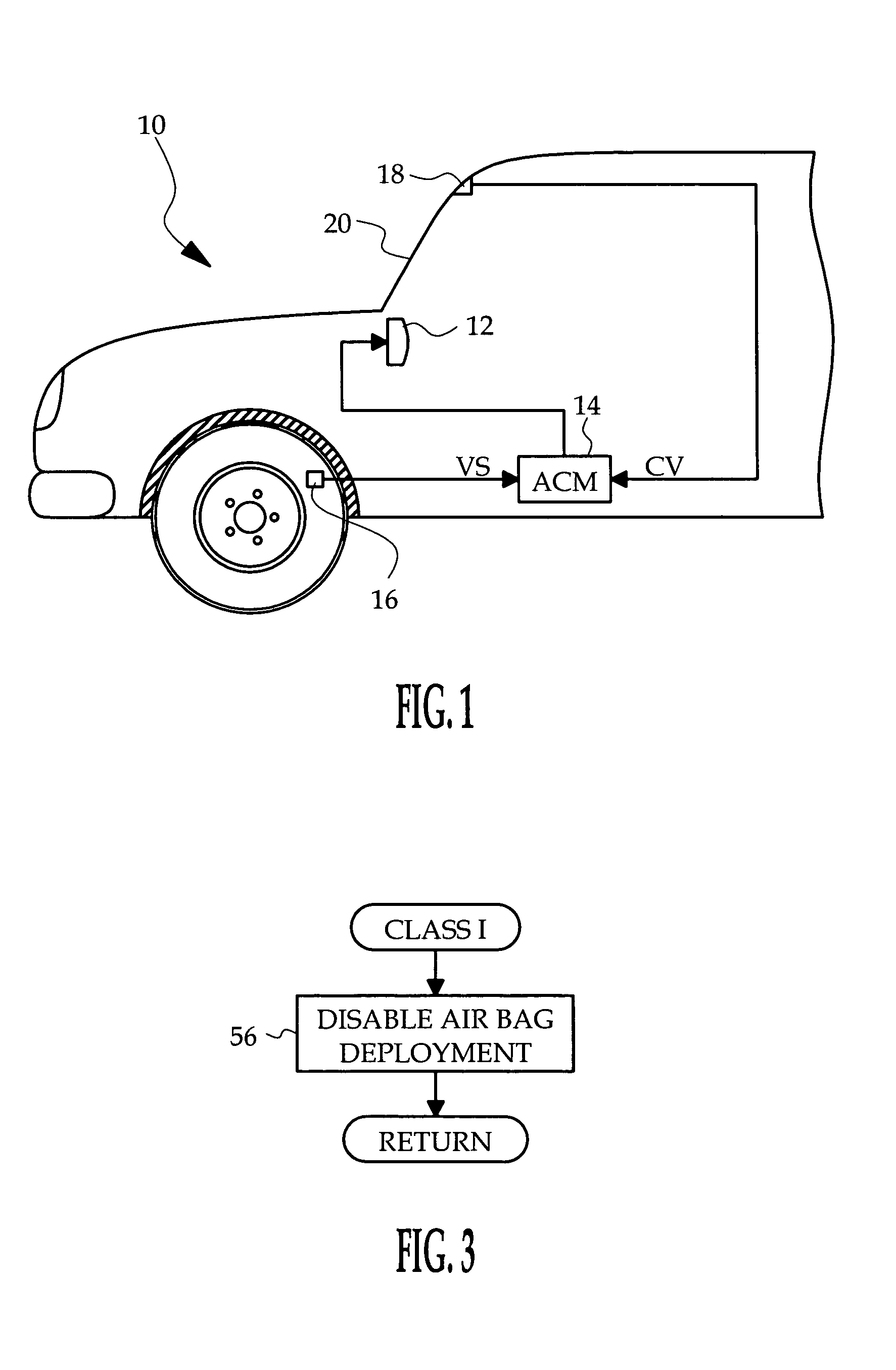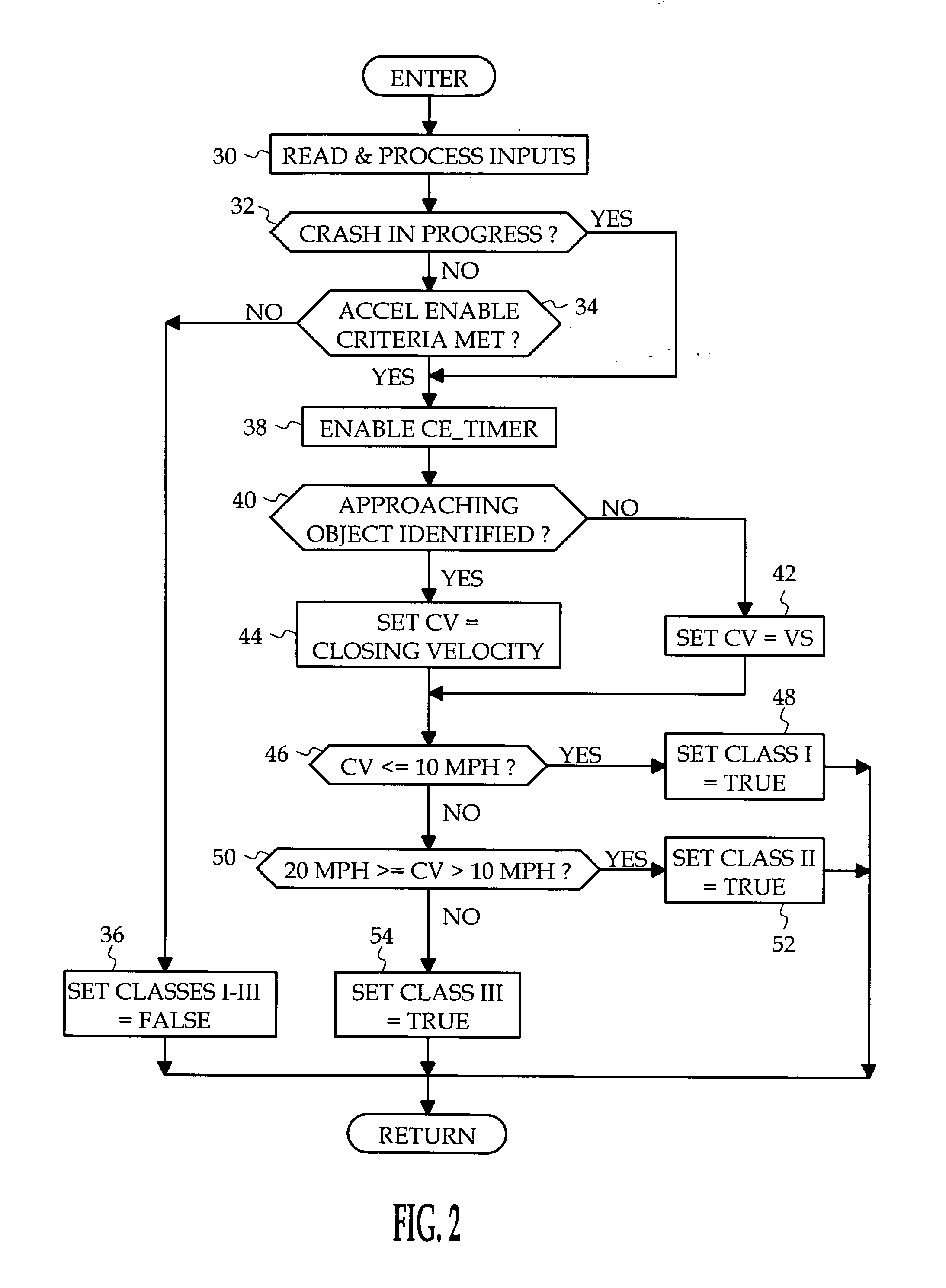Supplemental restraint deployment method with anticipatory crash classification
a technology of supplemental restraints and classification methods, applied in the direction of pedestrian/occupant safety arrangements, instruments, tractors, etc., can solve problems such as affecting the safety of pedestrians and occupants, and achieve the effect of reducing the cost of the system
- Summary
- Abstract
- Description
- Claims
- Application Information
AI Technical Summary
Benefits of technology
Problems solved by technology
Method used
Image
Examples
Embodiment Construction
[0012] Referring to FIG. 1, the reference numeral 10 generally designates a vehicle including one or more multi-stage supplemental restraints 12 such as airbags and a microprocessor-based airbag control module (ACM) 14. The ACM 14 has an internal accelerometer responsive to longitudinal acceleration of the vehicle 10, and also receives input signals pertaining to vehicle speed (VS) and closing velocity (CV) of an approaching object. The vehicle speed input VS is obtained from one or more conventional wheel speed sensors 16, and the closing velocity input CV is obtained from a closing velocity sensor 18 mounted on the interior surface of the vehicle windshield 20. An example of a suitable closing velocity sensor 18 is the CV sensor manufactured by Continental Automotive Systems (TEMIC), for example. This CV sensor emits a coded laser beam in the forward path of the vehicle 10 and decodes beam components reflected from an approaching object to identify its existence and determine the ...
PUM
 Login to View More
Login to View More Abstract
Description
Claims
Application Information
 Login to View More
Login to View More - R&D
- Intellectual Property
- Life Sciences
- Materials
- Tech Scout
- Unparalleled Data Quality
- Higher Quality Content
- 60% Fewer Hallucinations
Browse by: Latest US Patents, China's latest patents, Technical Efficacy Thesaurus, Application Domain, Technology Topic, Popular Technical Reports.
© 2025 PatSnap. All rights reserved.Legal|Privacy policy|Modern Slavery Act Transparency Statement|Sitemap|About US| Contact US: help@patsnap.com



